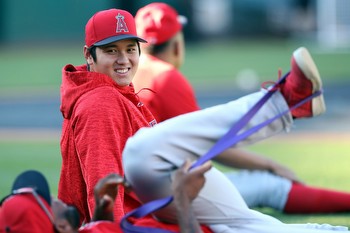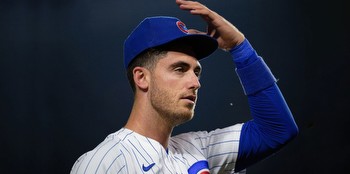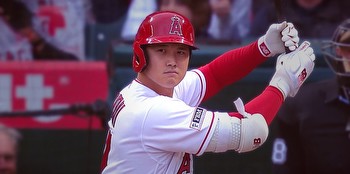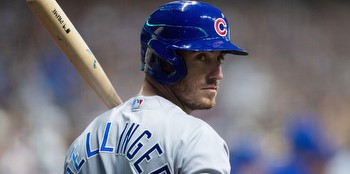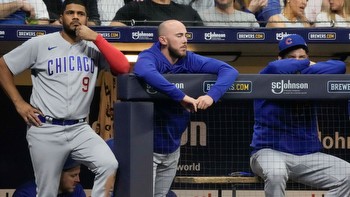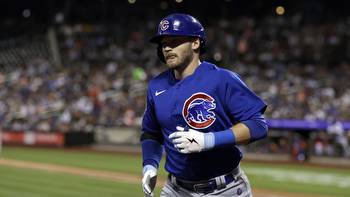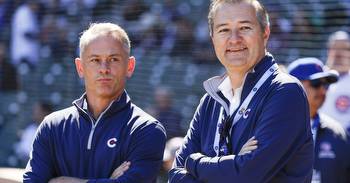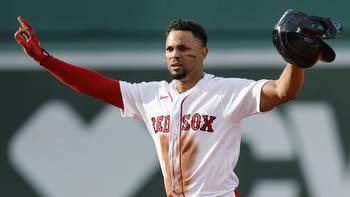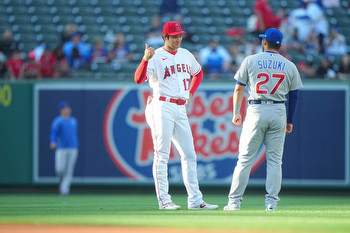More questions than answers as Cubs wait for clarity in Shohei Ohtani sweepstakes
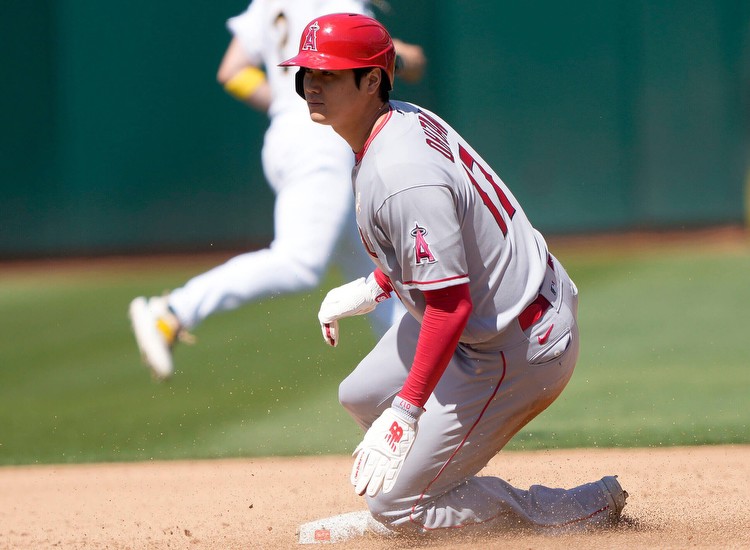
NASHVILLE, Tenn. — Maybe this is the calm before the storm. Shohei Ohtani and his representation at Creative Artists Agency have been so secretive about the process that it’s hard to predict. But the usual offseason flow of rumors, trades and free-agent deals hasn’t started yet. That happens when a superstar is still unsigned and the over/under on Ohtani’s next contract should’ve been set at $600 million.
The drama and the intrigue that Major League Baseball wants to sell during the Winter Meetings will have to wait at least another day. The Chicago Cubs are in that holding pattern while Ohtani weighs his options and angles for potentially the biggest player contract in the history of North American professional sports. There are far more questions than answers at the Gaylord Opryland Resort.
“Sometimes it’s kind of a dam that gives way and a lot of things happen,” Cubs general manager Carter Hawkins said. “Trying to create this perfect offseason where A is going to happen and then B is going to happen and then C is going to happen and then D is going to happen, it’s way too complex of a challenge to actually do that. Instead, you have to be able to look at each individual transaction and say, ‘Hey this makes sense for us.’
“While there’s not a lot of action in terms of things coming to fruition, there is a lot of action in terms of preparation to be able to make those decisions quickly should they come across our desk quickly.”
Why are things moving so slowly?
Due to a personal matter, Cubs president of baseball operations Jed Hoyer was delayed traveling to Nashville and scheduled to arrive late for the Winter Meetings, team sources said. Hawkins met with Chicago reporters in a hotel suite and handled Monday’s media availability. This should not be interpreted as unusual.
Ohtani’s looming presence, however, cannot be ignored. This is a once-in-a-lifetime opportunity to sign a future Hall of Famer who would become the team’s best hitter next year, the team’s best pitcher in 2025 and Wrigley Field’s most marketable player since Sammy Sosa.
“It definitely has felt like a little bit of a slower market,” Hawkins said. “I can’t figure out if it’s because of the big guys at the top or because everybody had norovirus at the GM meetings and all those conversations didn’t start up until a few days later.”
It’s also been a month since that outbreak at an Arizona resort. Once Ohtani makes a decision, there will be a domino effect.
“It feels like there’s been less transactions (so far),” Hawkins said. “Honestly, I think everybody getting sick slowed the market down. I just think about all the calls that I made and guys were like, ‘Uh, sorry, I can’t talk.’ But, yeah, when you have someone as unique as the players at the top of the market, that just creates a new dynamic.”
Do the Cubs have two budgets for next year — one for Ohtani and one without Ohtani?
That’s a possibility, but adding any player of a certain magnitude — whether it’s signing Ohtani or trading for Juan Soto — would require the Cubs to analyze how much the deal would cost and account for the potential impact the move would have on the franchise’s revenues. There’s no doubt Ohtani’s arrival would enhance the Ricketts family’s massive investments in Wrigleyville.
Ideally, Cubs chairman Tom Ricketts views spending in baseball operations as a “flow over time” in which Hoyer has a clear view of what the team plans to spend years into the future. After the Cubs made a surprising run to the 2015 National League Championship Series, Theo Epstein worked with business operations to essentially do two offseasons in one winter. The Cubs wanted to capitalize on that momentum and shifted resources around because the anticipated class of free agents after the 2016 season wasn’t as promising.
“You have an idea, generally, but those things ebb and flow depending on the context and what’s happening,” Hawkins said. “I don’t think there’s some judge and jury that says ‘you cannot do this’ or ‘you can do this’ as much as it’s just having constant conversations with ownership and making sure that we’re all aligned on the direction we’re going.”
When will the Cubs go over the luxury tax threshold again?
The Cubs made a strategic decision at this year’s trade deadline to hold on to Cody Bellinger, trade for Jeimer Candelario and make slight improvements to their bullpen while working to stay beneath the $233 million luxury tax threshold. More than the financial aspect, the Cubs factored in the baseball-related components, such as draft picks and bonuses for international signings. The Cubs felt their trade options were limited in terms of game-changing talents, and going all in would’ve been irrational since the team needed a furious rally in late July just to get back around .500.
Signing Ohtani and then waiting for pitchers and catchers to report for spring training would not work from a business perspective or as a team-building blueprint. The Cubs constructed a roster that won 83 games in a year when two NL teams made the playoffs with 84 wins. If the Cubs exceed next year’s luxury tax threshold ($237 million), it should be by a significant amount.
“You’re looking at the value of incremental wins,” Hawkins said. “You’re thinking about your future payrolls over time. You’re thinking about the impact of that particular player. That kind of goes back to the value of an incremental win. You probably don’t want to go over just to go a quarter of a win over where you were prior. That doesn’t make a ton of sense because of the cascading effects that are then going to impact your team five, six years down the road.
“It’s really figuring out where you are in your window. You’re always focused on the present more than the future. But (it’s determining) whether or not it’s time (to) really start to discount the future a little bit more. That’s the calculus that any team is going through that has the means to potentially go over. It’s certainly a calculus that we’ve gone through each year.”
Why would Ohtani choose the Cubs?
It’s always about the money, but any big-market team Ohtani is considering can offer him a decade-plus contract worth in the range of half a billion dollars. The Cubs made a nine-game improvement at the major-league level this year and showed progress with their farm system, but they aren’t a perennial World Series contender like the Los Angeles Dodgers.
If staying on the West Coast is Ohtani’s preference, then that won’t help the Cubs with their recruiting pitch. The Cubs are very good with those presentations, but it’s entirely unclear whether the personal touches and connections that once worked with free agents like Jon Lester, Ben Zobrist, Jason Heyward, Yu Darvish and Seiya Suzuki will matter.
The Cubs would have to convince Ohtani that Wrigley Field is the place where he can win championships, earn unanimous induction into Cooperstown and maintain some semblance of the privacy he seems to desire.


